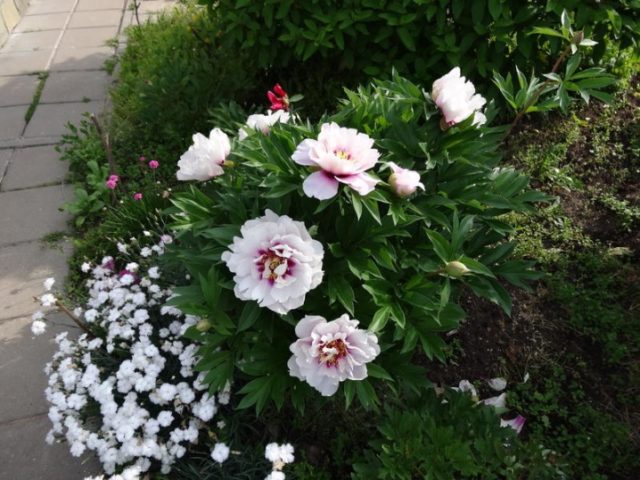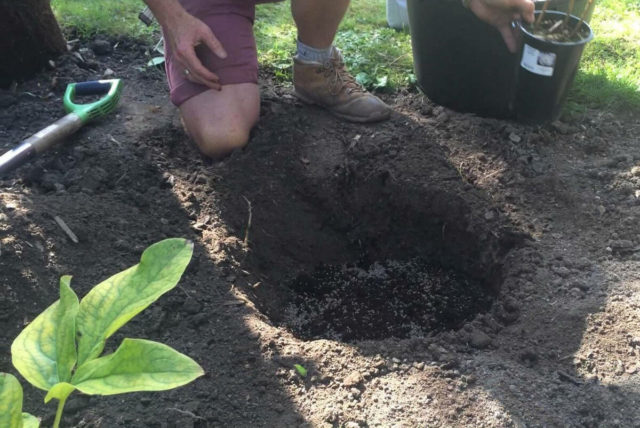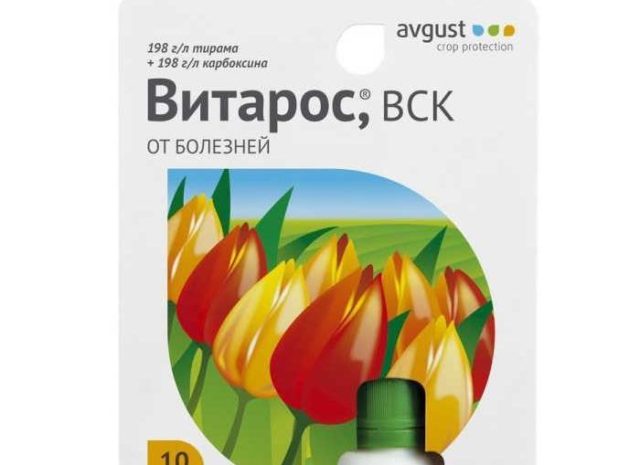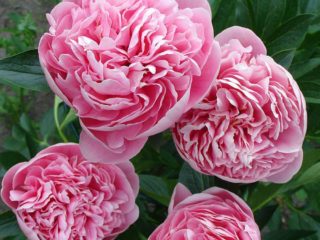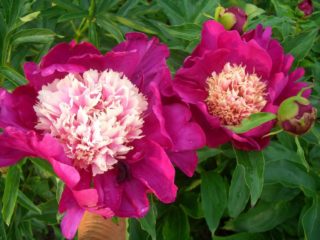Content
In the group of ITO peonies, there are not so many varieties. But they all attract attention with their unusual appearance. Peony Cora Louise (Cora Louise) is distinguished by double-colored buds and a pleasant aroma. The description of the culture, the features of cultivation and care are important for lovers of garden plants.

The petals do not crumble for a long time, they hold perfectly not only on the bushes, but also in the cut
Description of the peony Cora Luis
Peony ITO Cora Luis is a representative of intersectional hybrids. Herbaceous and tree-like varieties were used for its selection. The flowering perennials got their name from the name of the author, botanist from Japan Toichi Ito.
Peony Bark Louise belongs to shrubs, the height of which ranges from 95-100 cm. Shoots and peduncles are powerful, strong, perfectly hold a large number of buds. Despite the fact that the bushes are spreading, no support is needed.
Plants prefer open areas, as the beauty of the buds reveals better in the sun. But they feel good with slight shading.
The peony Cora Louise has a dense green mass with carved large leaves. Moreover, the shade remains throughout the growing season. The bushes grow quickly, this must be taken into account when planting so that the flowers do not interfere with each other.
The Cora Luiza variety is frost-resistant, does not freeze at -39 degrees, so it can be grown almost throughout Russia.
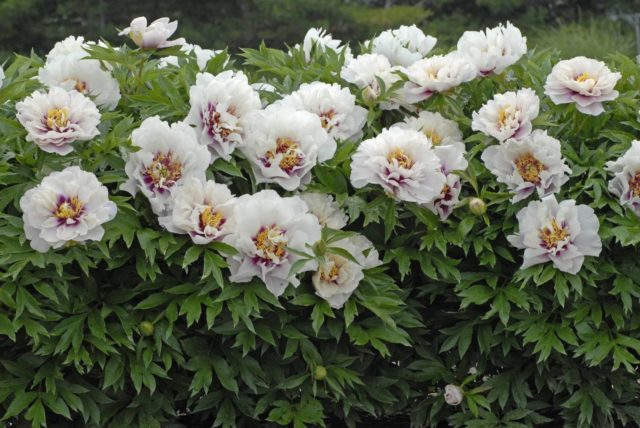
Flowers can be grown in one place without transplanting for about 20 years.
Peculiarities of flowering of ITO-peony Cora Louise (Cora Luis)
ITO peonies Cora Louise are classified as large-flowered plants with semi-double buds, which is confirmed by the photo below. The diameter of the flower ranges from 25 cm.
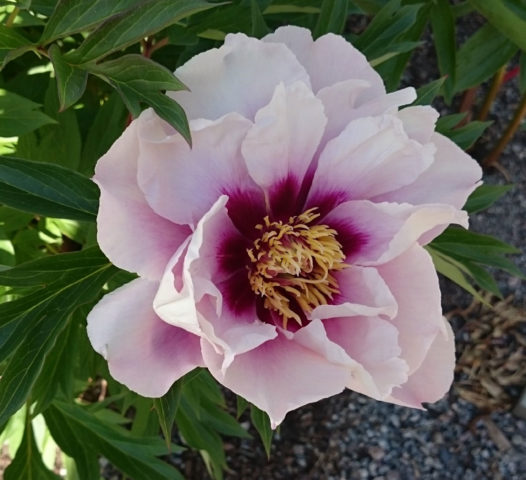
The petals are not monochromatic: they can be white-pink or white-cream with a subtle lilac tint
The base, where the stamens are located, is a rich lavender or purple. Against this background, dark yellow long stamens look especially decorative. During flowering, a delicate sweetish aroma spreads around the area.
Flowering begins early, as a rule, subject to the norms of growing buds, a lot is formed. On adult bushes, there are up to 50 of them. Already in late May or early June (depending on the climatic conditions of the region) the frost-resistant plant pleases with the first buds.
The splendor of the flowering of the Cora Louise hybrid depends not only on the agricultural technology of cultivation, but also on the correct choice of place, the implementation of the planting algorithm.
If all the norms have been met, then in 2-3 years blooming peonies will appear on the site. Unfortunately, they are ugly, the petals are curved. That is why it is recommended to remove the first flowers so that 4-5 years after planting, the Cora Louise hybrid will reveal all its properties.
Application in design
Peony Cora Louise is a plant that gets along with almost all garden crops. With its help, you can create amazing flower arrangements not only in your summer cottage, but also in parks.
How to combine:
- Bushes can be placed one at a time or in a group.
- Often they are planted on green lawns, decorate mixborders, discounts, flower beds.
If mixed plantings are used, then the Cora Louise peony is positioned so that it does not interfere with neighboring plants
- The culture looks great next to undersized daisies, primroses, cuffs, badan.
- You can create a flower arrangement by planting a hybrid of ITO among delphiniums, bells, foxgloves.
- Against the background of evergreen conifers such as thuja, juniper, fir, peony Cora Louise will look especially attractive not only during flowering.
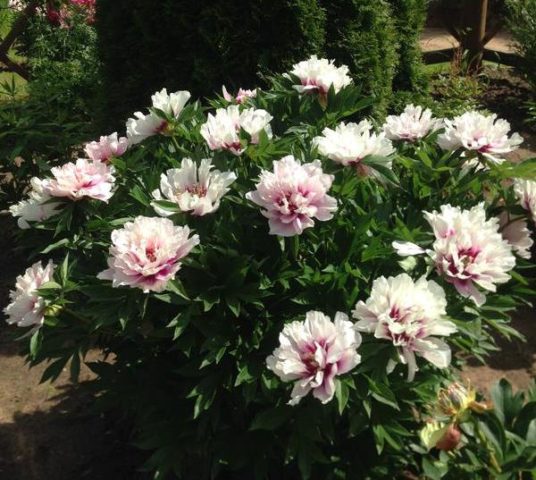
The hybrid is highly regarded by landscape designers for its unusual color and unpretentiousness.
Most often, the hybrid is grown for cutting. Fragrant flowers on long peduncles do not bend under the weight of the buds. In a vase for 14-15 days, the petals do not crumble, they remain fresh.
It is not recommended to grow perennial shrubs on loggias and balconies, not only because of the height and spreading, but also the impossibility of creating optimal conditions.
Reproduction methods
Since the peony Cora Louise belongs to hybrids, seed propagation is not recommended. In this case, the parent properties are not preserved. It is simple and easy to propagate the plant by dividing an adult bush that has already bloomed.
To do this, choose a healthy bush, dig it out and cut it into pieces, each should have at least 2-3 growth buds. The peony will reach full strength after planting in 3-4 years.
Landing rules
Since peonies have been growing in one place for about two decades and are not very fond of transplanting, you need to choose the optimal place for growing. It is also necessary to take into account the timing, use healthy seedlings.
Seat selection
Cora Louise hybrids prefer well-lit places where there is a lot of air, but without drafts. It should also be remembered that in the July heat, the bushes will have to be shaded in any convenient way.
You should not plant bushes in lowlands and those places where groundwater is located close to the surface. The fact is that the root system of the Cora Louise variety reacts negatively to excess moisture, although it really needs regular watering.
Soil features
As for the soil, the culture grows well on fertile, slightly acidic soils. To fill the planting pit, you can use store-bought balanced formulations or prepare them yourself.
Ingredients for peonies:
- garden soil and humus (compost);
- peat and sand;
- wood ash and superphosphate.
They start planting in the fall until the frost begins.
Preparation of seedlings
The planting material for ITO peonies Cora Louise is recommended to be purchased from trusted sellers. Saplings with an open root system should have healthy tubers without signs of rot or blackness. Before planting, the roots are shortened and the planting material is soaked in a solution of potassium permanganate.
Landing algorithm
Cora Louise peonies are planted in the same way as other varieties of the culture. Subject to the rules, the flowers grow quickly and after a few years they present gardeners with lush buds.
Stages of work:
- A pit is prepared 30 days before planting. Its size is 60x60x60.
A large pit volume is necessary, since a rapidly growing peony will need space
- The bottom is filled with drainage from pieces of brick, coarse sand or small pebbles.
- Add nutritious soil, then make a mound.
The soil for peonies Cora Louise should be nutritious, air and moisture permeable
- A sapling is placed on it obliquely, the buds are sprinkled with earth no deeper than 3-4 cm.
- A groove is made around the bush and watered abundantly. Then they mulch with humus.
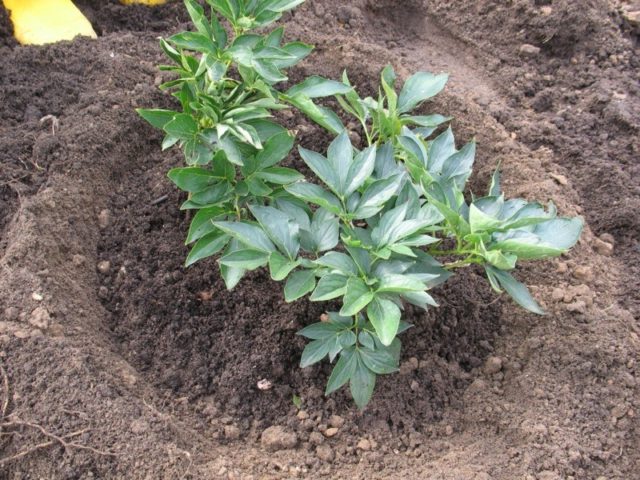
Gently press down on the soil to avoid damaging fragile buds
Follow-up care
Further care for the Cora Louise hybrid is traditional, boils down to the following activities:
- watering;
- top dressing;
- removing weeds;
- loosening the soil;
- protecting plants from pests and diseases.
Peonies are demanding on moisture. They especially need irrigation during flowering and in a hot period. But it is not recommended to fill the bushes, as this can cause rotting of the root system.
The Cora Louise hybrid will not have to be fed 2-3 years after planting if nutrient soil and fertilizers were used for this. In the future, food is introduced in early spring to activate the growth of the plant. Then feeding is carried out when peonies are formed. The third time is after the end of flowering.
For the first two feedings, a mineral fertilizer containing phosphorus and potassium is used. In autumn - superphosphate.
The root system of the peony Bark Louise needs oxygen, so the root zone must be loosened to a shallow depth so as not to damage the roots and buds. Remove weeds at the same time.
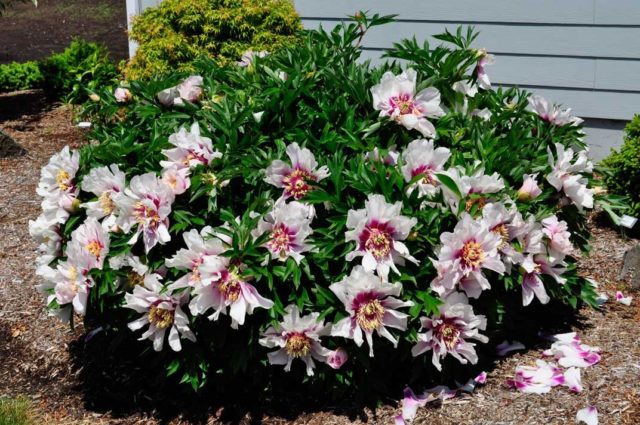
If you follow all the rules, then every spring the bushes will delight with abundant flowering
Preparing for winter
ITO peonies, unlike herbaceous species, are not completely cut off, but only shortened to a lignified part. The fact is that it is in this place that the kidneys of the next year are formed. After it is well watered and fertilized.
Despite the winter hardiness, in the Northern regions, the hybrid needs partial shelter. It is carried out when persistent frosts begin. The root zone is covered with compost, humus, the layer should be at least 20-25 cm. You can also pre-cover the soil around with pieces of cardboard.
Pests and diseases
Peony Cora Louise, unfortunately, is not resistant to diseases and pests, so this complicates care. That is why you need to know your enemies and be able to deal with them.
Diseases | Signs | Control measures |
Gray rot | Young shoots are covered with brown spots in spring, which later become gray from bloom | Use fungicides for spring treatment of bushes: · "Fundazol"; · "Vitaros"; · "Speed" |
Rust | In the middle of summer, rusty spots appear on the upper part of the leaf blades, which, growing, lead to the drying of the green mass and buds | In the spring, for prophylaxis, treat it with "Quick" or "Horus". Before wintering, use the drug "Ridomil Gold" |
If we talk about pests, then most often the Cora Louise hybrid is annoyed:
- bronze beetle;
- root knot nematodes;
- turf ant;
- aphid.
For pest control, it is recommended to use special or folk remedies.
Conclusion
Peony Cora Louise is a relatively young hybrid, but it is already gaining popularity among flower growers around the world. With its help, you can decorate any garden area, and you don't have to make much effort.
